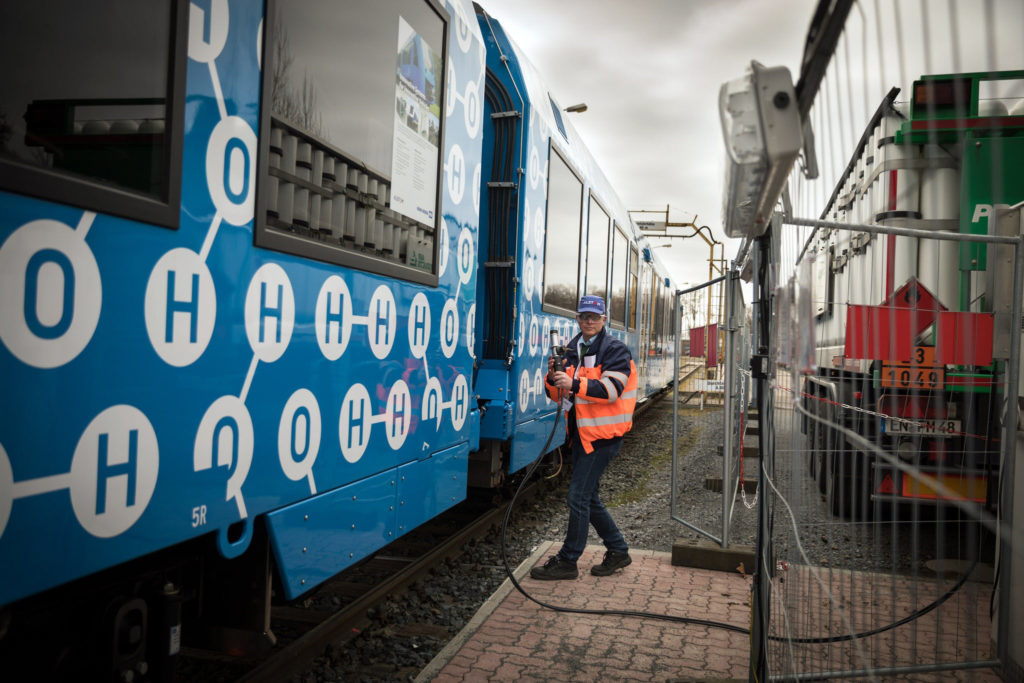
They are the first of their kind in the world: the two hydrogen-powered trains that have been operating in regional traffic between Bremervörde, Cuxhaven, and Bremerhaven for exactly one year.
Since the beginning of the test phase, they have had high hopes because the zero-emission vehicles will in future replace the diesel trains used on non-electrified railway lines. And indeed, the balance of fuel cell trains after a year of piloting is apparently convincing across the board.
 Hydrogen trains extremely reliable
Hydrogen trains extremely reliable
“The trains went great,” said a spokeswoman for the railways and transport company Elbe-Weser (evb), Andrea Stein: “We have a very high level of availability, even though these are only pre-series models.” Specifically, this means that the two prototypes called “Coradia iLint”, which were built by Alstom in Salzgitter, ran reliably in 95 percent of the cases. The trains traveled more than 130,000 kilometers each year. “A very positive balance,” as Dirk Altwig from the Lower Saxony State Transport Authority (LNVG) emphasizes. Among other things, the LVNG is responsible for planning rail transport in Lower Saxony.
When the world knocks in Bremervörde
But how do the new trains actually work? The fuel cells in the trains convert hydrogen and oxygen into water, creating electricity. This charges the lithium-ion batteries on board and drives the electric motor. The trains are emission-free because they only release water vapor and condensed water into the environment. A technology that has never been seen anywhere else in the world. Manufacturer Alstom also praises the benefits of its hydrogen trains for the energy transition: They are also a role model for other countries, as managing director Jörg Nikutta emphasizes. Indeed, delegations, including those from Canada, Russia or South America, were already in Bremervörde to find out about the technology on-site.
“Like a whir”
The “Coradia iLint”, which currently do not run for the purpose of precise data analysis, are not completely CO2-neutral: emissions do occur during the energy-intensive production of hydrogen. After all, although the 54-meter-long trains are 13 meters longer than the diesel locomotives previously used, they are significantly quieter. “It is more like a whir in an S-Bahn,” said evb spokeswoman Andrea Stein. A tank of hydrogen is enough for about 800 to 1,000 kilometers. You can still get these at a provisional facility in Bremervörde.
Diesel units to disappear
According to LVNG, the 15 EVB diesel railcars are to be replaced by iLint trains from December 2022. And there are already orders for 27 vehicles from Hessen, and manufacturer Alstom is in negotiations with other federal states, according to its own information. In Bremervörde, a fixed hydrogen filling station should be available in good time – it would also be the first of its kind in the world. A total of 126 diesel multiple units are currently on the route in Lower Saxony.
Source: NDR 1 Lower Saxony
Read the most up to date Fuel Cell and Hydrogen Industry news at FuelCellsWorks




